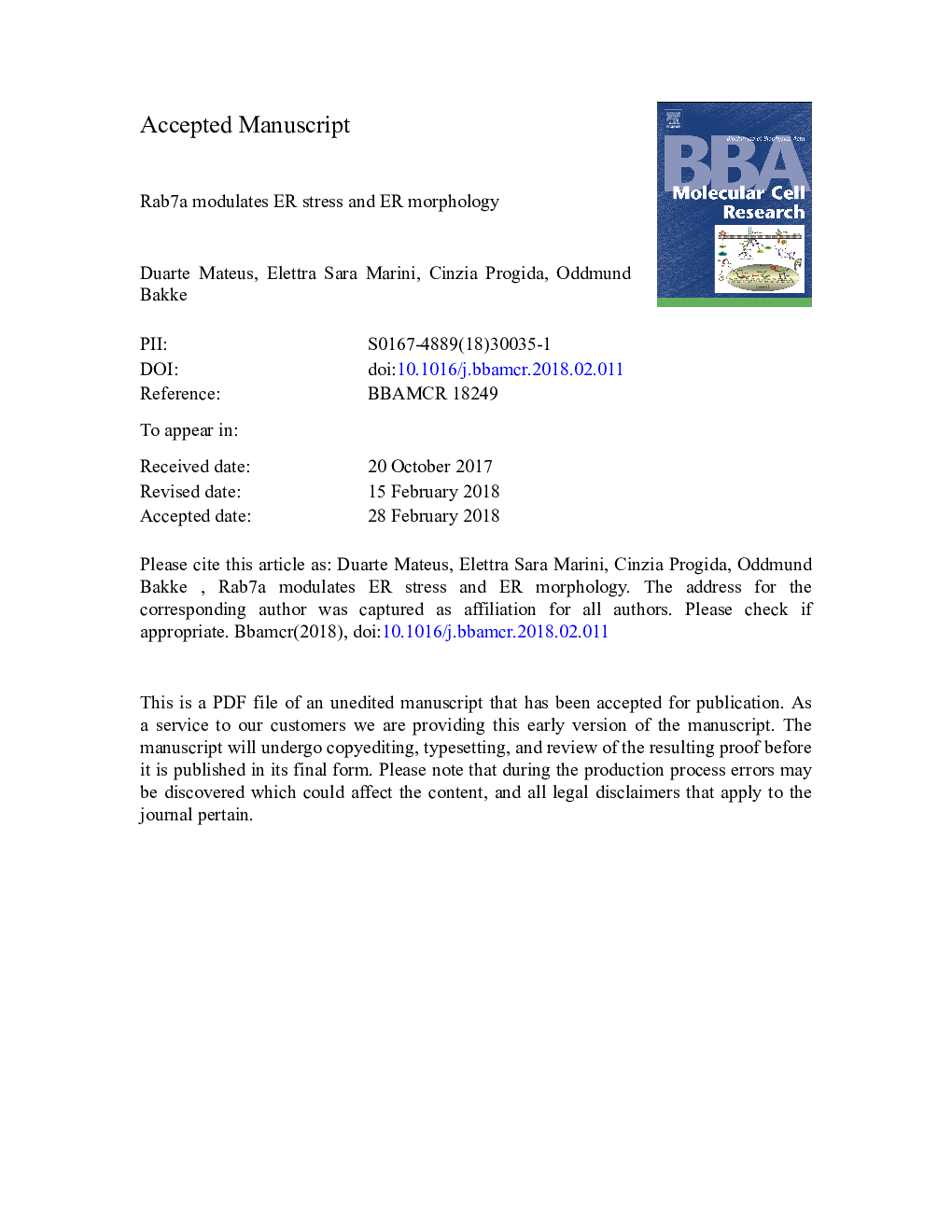| Article ID | Journal | Published Year | Pages | File Type |
|---|---|---|---|---|
| 8303683 | Biochimica et Biophysica Acta (BBA) - Molecular Cell Research | 2018 | 38 Pages |
Abstract
The Endoplasmic Reticulum (ER) is a membranous organelle with diverse structural and functional domains. Peripheral ER includes interconnected tubules, and dense tubular arrays called “ER matrices” together with bona fide flat cisternae. Transitions between these states are regulated by membrane-associated proteins and cytosolic factors. Recently, the small GTPases Rab10 and Rab18 were reported to control ER shape by regulating ER dynamics and fusion. Here, we present evidence that another Rab protein, Rab7a, modulates the ER morphology by controlling the ER homeostasis and ER stress. Indeed, inhibition of Rab7a expression by siRNA or expression of the dominant negative mutant Rab7aT22â¯N, leads to enlargement of sheet-like ER structures and spreading towards the cell periphery. Notably, such alterations are ascribable neither to a direct modulation of the ER shaping proteins Reticulon-4b and CLIMP63, nor to interactions with Protrudin, a Rab7a-binding protein known to affect the ER organization. Conversely, depletion of Rab7a leads to basal ER stress, in turn causing ER membrane expansion. Both ER enlargement and basal ER stress are reverted in rescue experiments by Rab7a re-expression, as well as by the ER chemical chaperone tauroursodeoxycholic acid (TUDCA). Collectively, these findings reveal a new role of Rab7a in ER homeostasis, and indicate that genetic and pharmacological ER stress manipulation may restore ER morphology in Rab7a silenced cells.
Keywords
Related Topics
Life Sciences
Biochemistry, Genetics and Molecular Biology
Biochemistry
Authors
Duarte Mateus, Elettra Sara Marini, Cinzia Progida, Oddmund Bakke,
